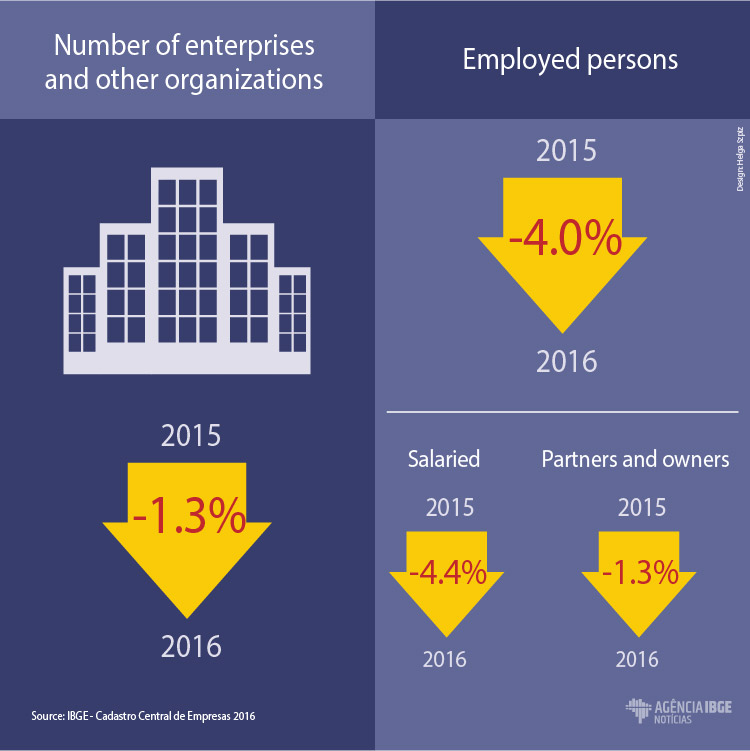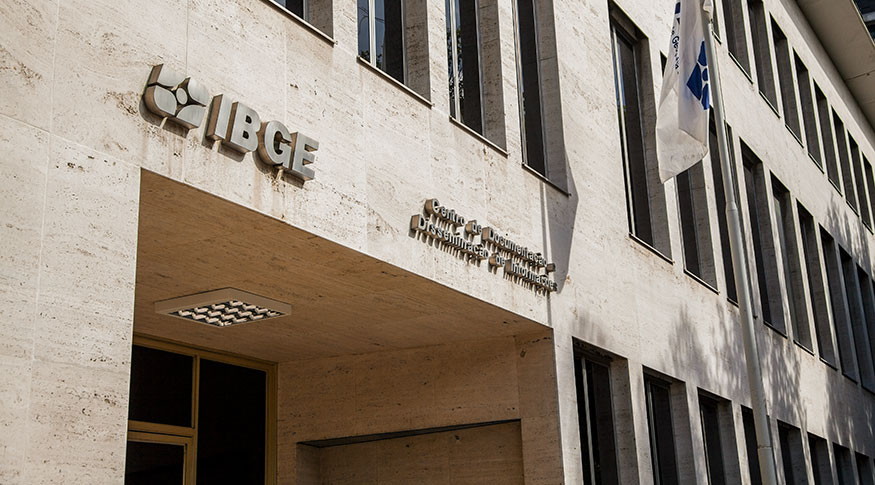Central Register of Enterprises
Employment falls in 2016, but proportion of salaried-employed persons with a diploma grows
June 27, 2018 10h00 AM | Last Updated: June 27, 2018 12h02 PM

Enterprises and other organizations lost 2.1 million salaried workers in 2016, down 4% compared to the previous year, and the second consecutive decline in the series started in 2007. In 2015, the decline was 3.1%. In the opposite way, the salaried population with a diploma grew by 1.6% in 2016, in a formal labor market with a predominance of workers without a higher degree (78.3% of the total).
The employment drop occurred mainly in labor-intensive activities such as construction 512.6 thousand less persons, manufacturing industry, 393.7 thousand less and trade and repair of motor vehicles and motorcycles, down 273.4 thousand. The information is from the Central Register of Enterprises (CEMPRE), released today by the IBGE.
Even in years of crisis, such as 2015 and 2016, the participation of higher education employed persons is increasing, despite the fall in the number of employed persons. According to analyst Denise Guichard, the workforce with higher education is more qualified and, traditionally, entrepreneurs tend to keep them: "The cost to replace them is much higher. It is easier to replace a worker without a higher degree because there is greater availability in the market."

Compared to 2015, Denise said that "the crisis was widespread in virtually all sectors, with a reduction in the total employed population, in the salaried-employed persons, and in the overall wage bill." The average monthly salary, which stood at R$2,661.18, was the only variable that increased, 0.7%, inflation off. In addition to the fall in the salaried staff, the number of business partners and owners also shrank, although less, 1.3%. The study analyst explained that organizations wipe out staff before closing, and that "the decline in the number of partners and owners is a reflection of the reduction in the number of companies."
The CEMPRE also showed that there was a decrease of 64.3 thousand enterprises in 2016, a 1.3% drop in relation to the previous year. Those with a larger size, with 250 persons or more, were the ones that mostly reduced in number of companies, 5.4%, and in total wages and other compensations, 3.9% in real terms.
Wage gap between men and women shrinks, but it is 22.2% yet
In 2016, men earned wages 22.2% higher than women: while men got an average of R$2,895.56, women earned R$2,368.98. According to Denise, "the gap reduction is more related to the fact that the relative wage growth rate of men was lower than that of women, especially in enterprises with more than 250 persons."

















